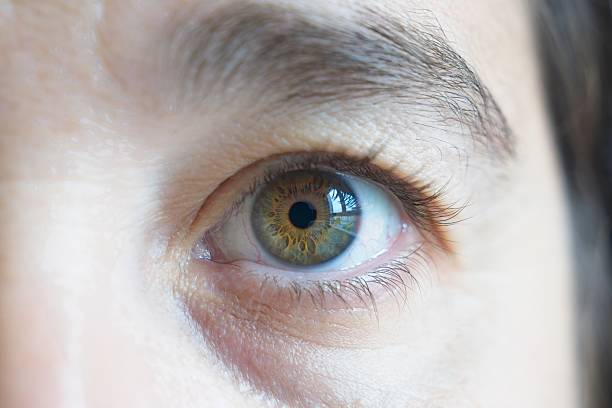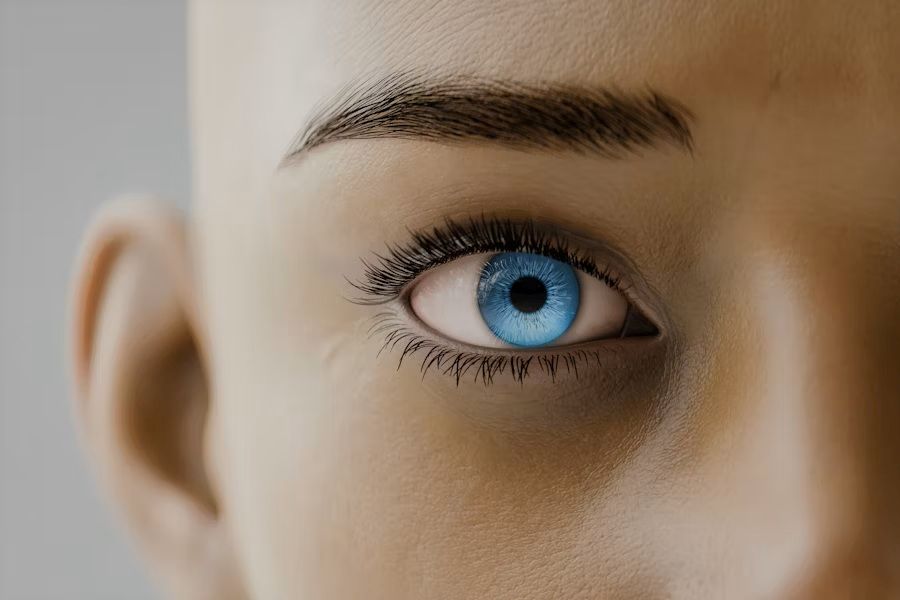Il tuo carrello è vuoto
Rare Eye Colors Around the World: Cultural Perceptions and Scientific Insights

The human eye, a window to the soul, comes in a mesmerizing array of colors. While brown, blue, and green eyes are common, some individuals possess truly rare and captivating eye colors that spark curiosity and admiration. In this article, we'll delve into the fascinating world of rare eye colors, exploring their scientific origins, cultural significance, and the myths surrounding them.
Table of Contents
-
Understanding Rare Eye Colors
-
The Science Behind Eye Color
-
Most Common Rare Eye Colors
-
Amber Eyes: The Golden Gaze
-
Violet Eyes: Myth or Reality?
-
Heterochromia: Two Colors in One
-
Cultural Perceptions of Rare Eye Colors
-
Genetic Factors and Inheritance Patterns
Understanding Rare Eye Colors
Rare eye colors are those that occur in a small percentage of the global population. These unique hues often result from specific genetic variations or combinations of pigments in the iris. While exact statistics can vary, it's estimated that less than 5% of the world's population has truly rare eye colors.
The rarity of certain eye colors can differ significantly across geographic regions and ethnic groups. For instance, blue eyes are relatively common in Northern European populations but extremely rare in African or Asian communities. This distribution is largely due to evolutionary adaptations and historical migration patterns.
Understanding rare eye colors involves more than just recognizing their scarcity. It's about appreciating the complex interplay of genetics, biology, and environmental factors that contribute to these unique traits.
The Science Behind Eye Color
At its core, eye color is determined by the amount and type of pigments in the iris, primarily melanin. The two main forms of melanin in the iris are eumelanin (brown and black pigments) and pheomelanin (red and yellow pigments). The concentration and distribution of these pigments, along with the way light scatters in the iris, create the vast spectrum of eye colors we observe.
The science of eye color is fascinating:
-
Melanocytes in the iris produce melanin
-
The amount and type of melanin affect the absorption and reflection of light
-
Structural differences in the iris can influence how light scatters, contributing to color perception
Interestingly, the genes responsible for eye color are not fully understood. While early genetics lessons often simplify eye color inheritance to a single gene, the reality is much more complex. Multiple genes interact to influence eye color, which explains the wide variety of shades and combinations we see.
Most Common Rare Eye Colors
While "rare" is a relative term, some eye colors are consistently less common across global populations. Among the rarest eye colors are:
-
Amber: A golden or copper-like hue
-
Hazel: A combination of brown, green, and gold
-
Gray: A pale, sometimes silvery appearance
-
Green: Pure green eyes without brown or blue tints
These colors occur due to unique combinations of melanin and light scattering in the iris. Their rarity often makes them a subject of fascination and, in some cultures, a sign of special attributes or beauty.
Amber Eyes: The Golden Gaze
Amber eyes are often described as having a golden or coppery appearance. This rare eye color results from a specific type and amount of lipochrome (a yellow pigment) in the iris. True amber eyes are extremely rare, occurring in less than 1% of the world population.
The allure of amber eyes lies in their warm, almost luminous quality. In different lighting conditions, amber eyes can appear to shift between golden, honey, and even a light brown shade. This captivating variability adds to their mystique.
Culturally, amber eyes have been associated with various traits:
-
In some folklore, they're linked to heightened intuition or psychic abilities
-
They're often described as "wolf-like" due to their similarity to the eye color of some wolf species
-
In literature and film, characters with amber eyes are frequently portrayed as mysterious or otherworldly
Violet Eyes: Myth or Reality?
The concept of violet or purple eyes has captured the imagination of many, often associated with legendary beauty or supernatural abilities. However, true violet eyes are largely considered a myth in the scientific community.
What people often perceive as violet eyes are usually a variation of blue eyes. This perception can occur due to:
-
Very light blue eyes that appear violet in certain lighting conditions
-
The presence of red reflex in photographs, creating a purple appearance
-
A rare form of albinism that can make the eyes appear light purple
While genuine violet eyes are not scientifically documented in humans, the idea persists in popular culture, often attributed to famous figures like Elizabeth Taylor (who actually had deep blue eyes).
Heterochromia: Two Colors in One
Heterochromia is a fascinating condition where an individual has two different colored eyes or two colors within the same eye. This rare occurrence can be congenital (present from birth) or acquired later in life due to injury or disease.
There are three main types of heterochromia:
-
Complete heterochromia: Each eye is a completely different color
-
Sectoral heterochromia: Part of one iris is a different color from the rest
-
Central heterochromia: The inner ring of the iris is a different color from the outer ring
Heterochromia occurs in less than 1% of the population and can be associated with certain genetic syndromes. However, in most cases, it's a benign condition that doesn't affect vision.
Throughout history, heterochromia has been viewed with a mix of fascination and superstition. In some cultures, it's seen as a mark of good fortune, while in others, it has been associated with mystical abilities.
Cultural Perceptions of Rare Eye Colors
Eye color has played a significant role in cultural perceptions and beliefs across the world. Rare eye colors, in particular, have often been imbued with special meaning or powers in various societies.
In many Western cultures, blue eyes have long been idealized as a standard of beauty. However, this perception varies greatly across different regions and time periods. For instance:
-
In some Middle Eastern cultures, green eyes are considered particularly attractive and sometimes associated with jealousy or the "evil eye"
-
In parts of Asia, light-colored eyes can be seen as exotic or unusual, sometimes leading to fascination or even discomfort
-
Native American folklore often attributes special spiritual significance to people with two different colored eyes (heterochromia)
It's important to note that these cultural perceptions are generalizations and can perpetuate stereotypes. In reality, the beauty and significance of eye color are subjective and deeply personal.
Genetic Factors and Inheritance Patterns
The inheritance of eye color is a complex process involving multiple genes. While early genetic models suggested a simple dominant-recessive pattern, we now know that eye color is polygenic, meaning it's influenced by several genes working together.
Key points about the genetics of eye color include:
-
The OCA2 and HERC2 genes play significant roles in determining eye color
-
Mutations in these genes can lead to rare eye colors or conditions like albinism
-
Eye color can change slightly during early childhood as melanin production increases
-
Predicting a child's eye color based on parental eye colors is not always accurate due to the complexity of genetic interactions
Understanding the genetic basis of eye color is not just a matter of scientific curiosity. It has practical applications in fields like forensic science and genetic counseling.
In conclusion, rare eye colors represent a fascinating intersection of genetics, biology, and cultural perceptions. From the golden glow of amber eyes to the striking contrast of heterochromia, these unique traits continue to captivate our imagination and challenge our understanding of human diversity. As we unravel more genetic mysteries, we may gain deeper insights into the origins and significance of these rare ocular hues. Ultimately, the beauty of rare eye colors lies not just in their scarcity, but in the rich tapestry of human variation they represent.
Lascia un commento
I commenti saranno approvati prima di presentarsi.




